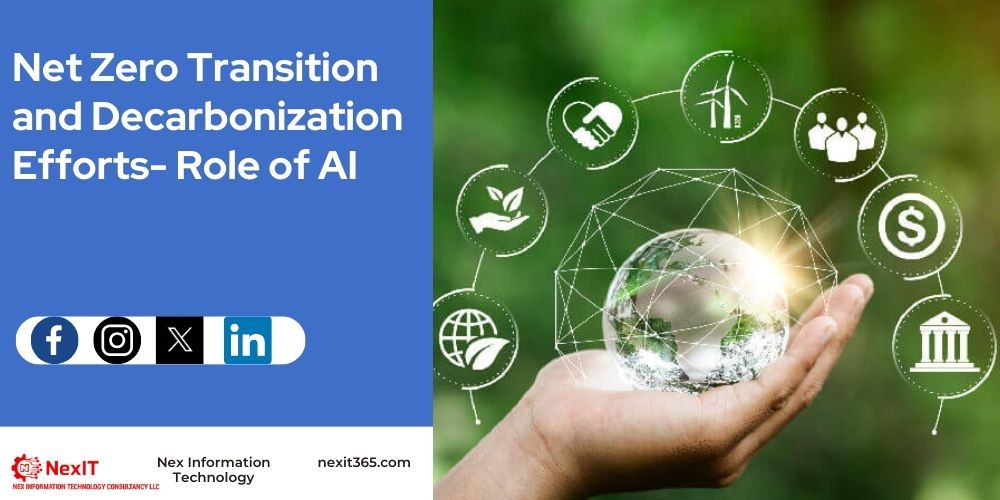Artificial Intelligence (AI) has the potential to revolutionize the way we approach the net zero transition and decarbonization efforts, enabling organizations to make data-driven decisions, optimize energy usage, and reduce emissions more effectively.
The use of AI in net zero transition and decarbonization efforts can help to accelerate progress towards achieving carbon neutrality and reducing greenhouse gas emissions. By leveraging AI to optimize energy usage and reduce waste, organizations can make more informed decisions that minimize their carbon footprint and contribute to a more sustainable future.
Some Ways In Which AI Is Being Used In This Context Include:
1. Energy Management:
AI Services can be used to optimize energy consumption, minimize waste and improve the efficiency of energy systems. This can involve the use of machine learning algorithms to analyze real-time energy data, predict future energy consumption, and optimize energy usage across multiple sites. AI algorithms can analyze energy usage data to identify areas where energy efficiency improvements can be made, such as optimizing HVAC systems, lighting, and other building systems.
Contact us to get best IoT services services in UAE, Cyber Security services, GXP Services, Sustainability Services
2. Renewable Energy Forecasting and Integration:
AI can analyze weather patterns and other data to forecast renewable energy generation and optimize energy storage systems, ensuring that renewable energy is available when needed. AI can help organizations integrate renewable energy sources, such as solar and wind, into their energy systems. This can involve using predictive algorithms to optimize the use of renewable energy sources, identifying suitable locations for renewable energy installations, and improving the performance and efficiency of renewable energy systems.
You Should Explore – The Current State and Future of AI
3. Carbon Footprint Management:
AI can help organizations measure, monitor and manage their carbon footprint more effectively. This can involve using AI-powered tools to identify opportunities for emission reductions, optimizing supply chains, and identifying the most effective carbon offsetting strategies.
4. Carbon Capture Optimization:
AI can optimize the operation of carbon capture and storage systems, maximizing the capture of carbon dioxide emissions.
5. Smart Transportation:
AI can be used to optimize transportation systems and reduce emissions from transportation. This can involve using predictive algorithms to optimize route planning, reduce fuel consumption and emissions, and improve the efficiency of logistics and distribution operations.
6. Smart Grid Management:
AI can optimize the operation of the electrical grid, balancing supply and demand, and reducing the need for fossil fuel-based power generation.
Learn How Web3 Is Our Chance to Make a Better Internet
7. Sustainable Agriculture:
AI can be used to optimize crop yields, reduce waste, and minimize the use of fertilizers and other inputs, reducing the carbon footprint of agriculture.
8. Climate Modeling and Risk Assessment:
AI can help to improve climate modeling and prediction, providing more accurate data to support decision-making and planning for the net zero transition. AI can assist with risk assessment by analyzing data on weather patterns, natural disasters, and other climate-related events, providing insights into potential risks and opportunities for mitigation.
Artificial Intelligence (AI) stands at the forefront of next-generation development, revolutionizing industries. Its advanced capabilities drive innovation, automation, and efficiency. AI applications span from healthcare to finance, transforming the way we live and work. As a catalyst for progress, AI shapes the future, unlocking unprecedented possibilities for societal advancement.




